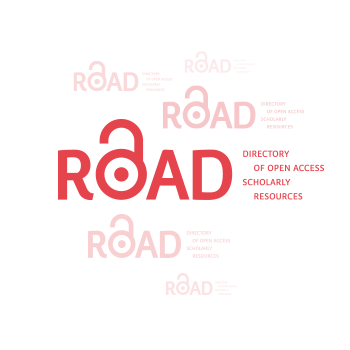The Influence of Arabic Sufism on Western Literature: A Study of Ibn al-Farid's Thought in the Works of William Blake
Keywords:
Sufi Literature, Ibn Al-Fāriḍ, Sultan of Lovers, William Blake, Influence, ImpactAbstract
The study aimed to explore the impact of Arabic Sufism on Western literature by analyzing the thought of the Arab Sufi poet Ibn al-Fāriḍ and comparing it with the works of the English visionary poet William Blake, highlighting the points of convergence in their philosophical and spiritual visions—particularly regarding divine love, unity of existence, and annihilation in the Beloved—while also clarifying the role of translation and cultural interaction in transmitting Sufi ideas from the Arab world to the West. The study employed the descriptive method to analyze Sufi concepts, the analytical method to uncover intellectual and emotional dimensions, and the comparative method to identify similarities and differences between the two Sufi experiences in their respective cultural and religious contexts. The results revealed that Arabic Sufism had a profound influence on Western mysticism, especially through core ideas such as unity, self-annihilation, and union with the Absolute. Both Ibn al-Fāriḍ and Blake expressed a mystical experience of divine love that transcends material existence toward spiritual perfection, demonstrating that the Sufi experience is a universal human phenomenon uniting spiritual visions across cultures. The study recommended expanding the scope of comparative literature to further trace the influence of Arabic Sufi thought in Western texts, encouraging in-depth research on symbolic and emotional expressions of mysticism, and analyzing Sufi imagery in Western literature to strengthen cultural and intellectual dialogue between East and West. The originality of this study lies in its novel comparative approach that combines literary, philosophical, and spiritual analysis to reveal the deep impact of Ibn al-Fāriḍ’s thought on William Blake’s mystical vision, thereby enriching literary and intellectual scholarship and affirming the universality of the Sufi experience as a bridge of human connection between civilizations.
Downloads
References
المراجع العربية:
ابن الفارض، عمر. (د.ت). ديوان ابن الفارض. لبنان، دار صادر.
إدريسي، عزيز. (09 آب، 2023). التصوف الإسلامي في الغرب وجدل الخطاب النسوي. الأكاديمية الدولية للدراسات الصوفية والعرفانية، متوفر على الرابط: https://sufirfan.org/
إدريسي، عزيز. (2010). ظاهرة التصوف الإسلامي في الغرب الحديث. مجلة حوليات التراث، )10)، 107-116.
آسين، ميجيل. (1980). أثر الإسلام في الكوميديا الإلهية. (ترجمة جلال مظهر)، مصر، مكتبة الخانجي.
أمين، أحمد. (2013). ظهر الإسلام الجزء الثالث. مصر، مؤسسة هنداوي للتعليم والثقافة.
أمين، ظاهير. (2019). التصوف الإسلامي عند الغرب (أنّا ماري شميل أنموذجاً). البحوث، 7(2)، 119-126.
بدوي، عبد الرحمن. (1979). دور العرب في تكوين الفكر الأوروبي. (ط 3)، لبنان، دار الفكر.
بلخضر، نوال. (2022). الشعر وقضايا الحب في التصوف الإسلامي. تطوير، 9(1)، 103-116.
بن الطيب، محمد. (2016). ابن عربي في الدراسات الاستشراقية. مؤسسة مؤمنون بلا حدود للدراسات والأبحاث، (8)، 71-82.
تشيتيك، وليام. (1 حزيران، 2021). أعمال ابن عربي وأهميتها الفلسفية. حكمة، متوفر على الرابط: https://hekmah.org/
الحسن، علي. (2019). التصوف والحركة الرومانسية. العراق، جامعة بغداد.
حلمي، محمد. (د.ت). ابن الفارض والحب الإلهي. (ط 2)، مصر، دار المعارف.
حمداوي، جميل. (8 تشرين الأول، 2007). التصوف والأدب. ديوان العرب، متوفر على الرابط: https://diwanalarab.com/
الخطيب، علي. (1983). اتجاهات الأدب الصوفي بين الحلاج وابن عربي. مصر، دار المعارف.
الزعبي، زياد. (2023). المثاقفة وتحولات المصطلح.. دراسات في المصطلح النقدي. الأردن، الآن ناشرون وموزعون.
جرين، نايل. (2017). الصوفية نشأتها وتاريخها. (ترجمة: صفية مختار)، مصر، مؤسسة هنداوي.
سرور، طه. (2017). محيي الدين بن عربي. مصر، مؤسسة هنداوي.
صالح، هاشم. (12 آب، 2019). ويليام بليك... عبقري أم مجنون؟ عندما مات في لندن عام 1827 ما كان أحد يعرف قيمته ولا وزنه. الشرق الأوسط، متوفر على الرابط: https://aawsat.com/
صياد، دارين. (9 آب، 2023). الأدب المقارن: الصوفية والمتعالية الأمريكية نموذجاً. منظمة فيستو الدولية للحقوق والتنمية، متوفر على الرابط: https://vistointernational.org/
عباسة، محمد. (2010). التصوف الإسلامي بين التأثر والتأثير. مجلة حوليات التراث، العدد 10، 7-24.
عبد الجبار، كادي؛ أبو الدهاج، زاير. (2021). الحب الإلهي في الشعر الصوفي عند ابن الفارض، دراسة انثروبولوجية. مجلة أنثروبولوجية الأديان، 17(1)، 399-423.
عنتابي، مريم. (2015). الثيوصوفيا (دراسة لقضية الألوهية في الفكر الثيوصوفي الحديث). السعودية، مركز التأصيل للدراسات والبحوث.
الفارس، نجاة. (4 تشرين الأول، 2016). "فائية" ابن الفارض. صحيفة الخليج، متوفر على الرابط: https://www.alkhaleej.ae/
القرشي، أمل. (2018). أثر فكر ابن عربي في الأسس الفلسفية لما بعد الحداثة "وحدة الوجود، والموقف من العقل" -دراسة تحليلية نقدية-. مجلة الذخيرة للبحوث والدراسات الإسلامية، 2(1)، 109-151.
قويدري، الأخضر. (2022). حضور التصوف الإسلامي في الثقافة الغربية المعاصرة: الطريقة الحبيبية الشاذلية أنموذجاً. منتدى الكلمة للدراسات والأبحاث، 29(117)، 143-157.
محمد، آية. (2024). الحب الإلهي والرمز الصوفي عند ابن الفارض وجلال الدين الرومي. مجلة بحوث الشرق الأوسط، 12(103)، 119-250.
مراد، قايد. (2006). الحب في الأدب الصوفي. مجلة الآداب واللغات، العدد 11، 91-104.
نصر، عاطف. (1978). الرمز الشعري عند الصوفية. لبنان، دار الأندلس للطبع والنشر.
المراجع العربية بنظام الرومنة:
Abn Alfard, 'Emr. (d.t). dywan abn alfard. lbnan, dar sadr.
Edrysy, 'Ezyz. (09 ab, 2023). altswf aleslamy fy alghrb wjdl alkhtab alnswy. alakadymyh aldwlyh lldrasat alswfyh wal'erfanyh, mtwfr 'ela alrabt: https://sufirfan.org/
Edrysy, 'Ezyz. (2010). zahrh altswf aleslamy fy alghrb alhdyth. mjlh hwlyat altrath, al'edd 10, 107-116.
Asyn, Myjyl. (1980). athr aleslam fy alkwmydya alelhyh. (trjmh jlal mzhr), msr, mktbh alkhanjy.
Amyn, Ahmd. (2013). zhr aleslam aljz' althalth. msr, m'essh hndawy llt'elym walthqafh.
Amyn, Zahyr. (2019). altswf aleslamy 'end alghrb (ana mary shmyl anmwdjaan). albhwth, 7(2), 119-126.
Bdwy, 'Ebd Alrhmn. (1979). dwr al'erb fy tkwyn alfkr alawrwby. (t 3), lbnan, dar alfkr.
Blkhdr, Nwal. (2022). alsh'er wqdaya alhb fy altswf aleslamy. ttwyr, 9(1), 103-116.
Bn Altyb, Mhmd. (2016). abn 'erby fy aldrasat alastshraqyh. m'essh m'emnwn bla hdwd lldrasat walabhath, al'edd 8, 71-82.
tshytyk, wlyam. (1 hzyran, 2021). a'emal abn 'erby wahmytha alflsfyh. hkmh, mtwfr 'ela alrabt: https://hekmah.org/
Alhsn, 'Ely. (2019). altswf walhrkh alrwmansyh. al'eraq, jam'eh bghdad.
Hlmy, Mhmd. (d.t). abn alfard walhb alelhy. (t 2), msr, dar alm'earf.
Hmdawy, Jmyl. (8 tshryn alawl, 2007). altswf waladb. dywan al'erb, mtwfr 'ela alrabt: https://diwanalarab.com/
Alkhtyb, 'Ely. (1983). atjahat aladb alswfy byn alhlaj wabn 'erby. msr, dar alm'earf.
Alz'eby, Zyad. (2023). almthaqfh wthwlat almstlh.. drasat fy almstlh alnqdy. alardn, alan nashrwn wmwz'ewn.
Green, Nile. (2018). Sufism: Its Origins and History – From Colonialism to Globalization (1800–2000). Hindawi Foundation. Available at: From Colonialism to Globalization (1800–2000) | Sufism: Its Origins and History | Hindawi Foundation.
Jryn, Nayl. (2017). alswfyh nshatha wtarykhha. (trjmh: sfyh mkhtar), msr, m'essh hndawy.
Srwr, Th. (2017). mhyy aldyn bn 'erby. msr, m'essh hndawy.
Salh, Hashm. (12 ab, 2019). wylyam blyk... 'ebqry am mjnwn? 'endma mat fy lndn 'eam 1827 ma kan ahd y'erf qymth wla wznh. alshrq alawst, mtwfr 'ela alrabt: https://aawsat.com/
Syad, Daryn. (9 ab, 2023). aladb almqarn: alswfyh walmt'ealyh alamrykyh nmwdjaan. mnzmh fystw aldwlyh llhqwq waltnmyh, mtwfr 'ela alrabt: https://vistointernational.org/
'Ebash, Mhmd. (2010). altswf aleslamy byn altathr waltathyr. mjlh hwlyat altrath, al'edd 10, 7-24.
'ebd aljbar, kady؛ abw aldhaj, zayr. (2021). alhb alelhy fy alsh'er alswfy 'end abn alfard, drash anthrwbwlwjyh. mjlh anthrwbwlwjyh aladyan, 17(1), 399-423.
'Entaby, Mrym. (2015). althywswfya (drash lqdyh alalwhyh fy alfkr althywswfy alhdyth). als'ewdyh, mrkz altasyl lldrasat walbhwth.
Alfars, Njah. (4 tshryn alawl, 2016). "fa'eyh" abn alfard. shyfh alkhlyj, mtwfr 'ela alrabt: https://www.alkhaleej.ae/
Alqrshy, Aml. (2018). athr fkr abn 'erby fy alass alflsfyh lma b'ed alhdathh "whdh alwjwd, walmwqf mn al'eql" -drash thlylyh nqdyh-. mjlh aldkhyrh llbhwth waldrasat aleslamyh, 2(1), 109-151.
Qwydry, Alakhdr. (2022). hdwr altswf aleslamy fy althqafh alghrbyh alm'easrh: altryqh alhbybyh alshadlyh anmwdjaan. mntda alklmh lldrasat walabhath, 29(117), 143-157.
Mhmd, Ayh. (2024). alhb alelhy walrmz alswfy 'end abn alfard wjlal aldyn alrwmy. mjlh bhwth alshrq alawst, 12(103), 119-250.
Mrad, Qayd. (2006). alhb fy aladb alswfy. mjlh aladab wallghat, al'edd 11, 91-104.
Nsr, 'Eatf. (1978). alrmz alsh'ery 'end alswfyh. lbnan, dar alandls lltb'e walnshr.
المراجع الأجنبية:
Alvi, A., Vengadasamy, R., & Periasamy, M. S. (2022). Mystical symbols of divine love in the poetry of Omar Tarin and William Blake: A comparative cognitive analysis. AWEJ for Translation & Literary Studies, 6(4), 48–65.
El Younssi, A. (2012). The Sufis and William Blake: When Islamic Mysticism and English Romanticism Intersect. A A, 0.
Farooq, S. (2018). A comparative study of select English mystic poetry (William Blake and Francis Thompson) and Kashmiri Sufi poetry (Shamas Faqir and Wahab Khar): A thematic approach. International Journal of Interdisciplinary Research in Arts and Humanities, 3(Conference World Special Issue 1), 212–216.
Nilchian, E. (2011). Sufi-Romantic Self Loss: The study of the influence of Persian Sufism on English romantic poetry (Doctoral dissertation, University of Leicester).
Qasim, F. (2017). The Influence Of Arabic Culture On European Medieval Romance & Poetry. Journal of the College of Arts, Humanities and Social Sciences, 24(59), 21 – 38.
Suleimenova, Z. A., Aldabergenova, A. A., & Yildiz, N. A. (2024). Spiritual themes and poetic style comparative analysis in Yasawi and Blake’s works. Bulletin of Ablai Khan University of International Relations and World Languages. Series: Philological Sciences, 73(2).
Downloads
Published
How to Cite
Issue
Section
License
Copyright (c) 2023 Journal of Palestine Ahliya University for Research and Studies

This work is licensed under a Creative Commons Attribution 4.0 International License.
مجلة جامعة فلسطين الاهلية للبحوث والدراسات تعتمد رخصة نَسب المُصنَّف 4.0 دولي (CC BY 4.0)











